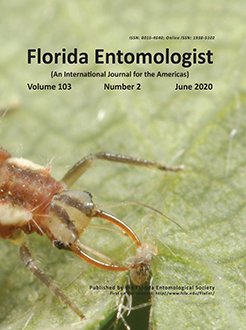The soybean aphid, Aphis glycines Matsumura (Hemiptera: Aphididae), continues to be the most economically important arthropod pest of soybean in the Midwest. Currently, management tactics for A. glycines rely on scouting and application of broad-spectrum insecticides. However, broad-spectrum insecticides are toxic to most natural enemies of this aphid. Selective insecticides may provide an alternative strategy for suppressing A. glycines populations while conserving populations of its natural enemies. Therefore, the aim of this study was to evaluate the potential lethal and sublethal effects of sulfoxaflor (a relatively new selective insecticide), to 2 of this pest's natural enemies, Chrysoperla rufilabris (Burmeister) (Neuroptera: Chrysopidae) and Hippodamia convergens Guérin-Méneville (Coleoptera: Coccinellidae). Laboratory bioassays were performed on first instars of both predators with residual toxicity evaluated over time until adult emergence. Parameters evaluated were mortality and developmental time for larvae and pupae, and adult body size. Fecundity also was determined for C. rufilabris. We found that sulfoxaflor was not toxic to first instar C. rufilabris. However, developmental time to adult was significantly delayed after exposure to this insecticide, but fecundity and body size were not negatively affected. For H. convergens, sulfoxaflor at 25% of the field rate was toxic to first instars. No significant differences were found with regard to developmental time and body size. It is important to note that sulfoxaflor, though relatively less toxic than some insecticides, is not entirely without consequence if natural enemies are exposed. The present study emphasizes the importance of examining earlier life stages and potential sublethal effects when evaluating the toxicity of insecticides in the presence of natural enemies.
How to translate text using browser tools
10 July 2020
Susceptibility of First Instar Hippodamia convergens (Coleoptera: Coccinellidae) and Chrysoperla rufilabris (Neuroptera: Chrysopidae) to the Insecticide Sulfoxaflor
Rafael Carlesso Aita,
Anh K. Tran,
Robert L. Koch

Florida Entomologist
Vol. 103 • No. 2
June 2020
Vol. 103 • No. 2
June 2020
integrated pest management
natural enemies
selective insecticides
soybean aphid




